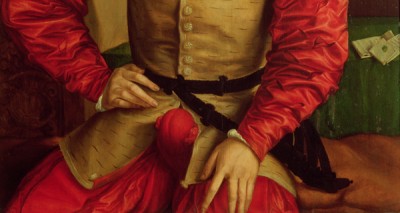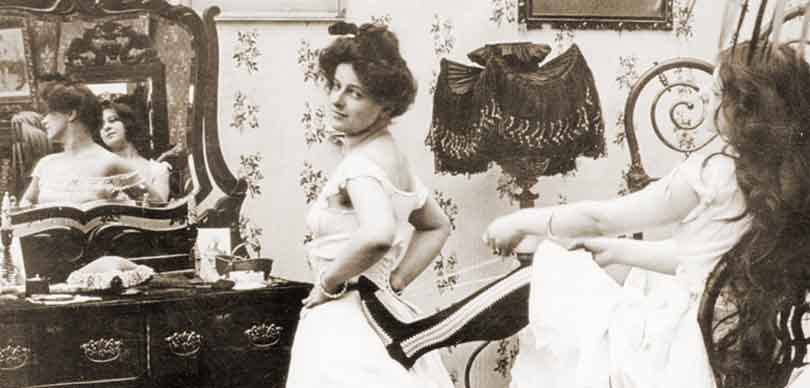
Wacky fashion trends – corsets, codpieces and crinolines
They say that fashion trends have a way of resurfacing, but here’s hoping that these trends have seen their best days and are not on their way back around.
The lace collar, or ruff , was fashionable in Western Europe from the mid-16th to the mid-17th centuries, lingering in Holland into the 18th century. Originally, it was a practical piece of cloth that could detach and be cleaned separately, so that the wearer wouldn’t soil their clothing underneath. Lace collars were typically worn by people of status, as the technique for making these collars was intricate, time-consuming and costly. As with anything of status, it became a contest to see how large and intricate they could become – with some collars being a foot or more wide!
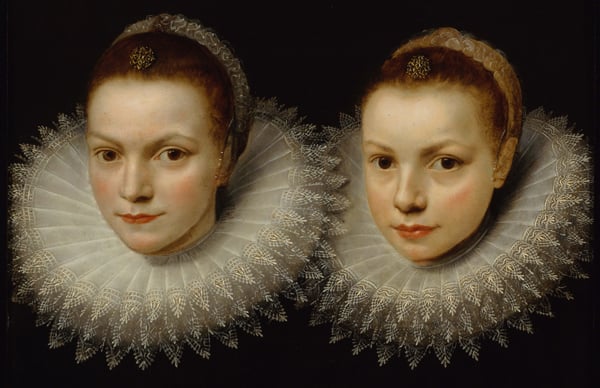
Two sisters, Flemish School / Sinebrychoff Art Museum, Finnish National Gallery, Helsinki / Bridgeman Images
High shoes, or chopines, were a very practical item in 15th century Venice and Turkey as they protected the wearer’s dress from dirty streets. During the Renaissance, chopines became a fashion statement and the height of the chopine soon came to symbolize the wearer’s social standing within the society. As the heights soared, some exceeded 30 inches high, they required the wearer to bring along a cane or a servant for support. In China and Turkey, concubines and odalisques wore these shoes for aesthetic reasons, but it is also thought that they were used to prevent women from escaping the harem. These boots are definitely not made for walking!
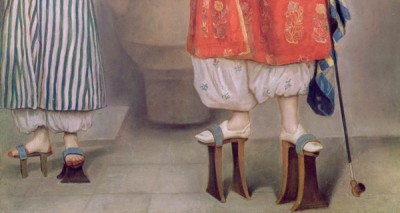
Turkish Woman with her Servant by Jean-Etienne Liotard / Musee d’Art et d’Histoire / Giraudon /Bridgeman Images
Although a primarily Renaissance fashion, archaeologists have found codpiece-clad figurines at Knossos and Crete. Surprisingly, the codpiece did not originate as a method by which men could bring attention to this area. In the 14th century, men’s tights consisted of two separate legs worn over thin linen underpants. When shorter hemlines came into fashion, this presented a little problem of overexposure. The codpiece was the triangular piece of fabric that covered the gap. Eventually, codpieces became shaped and padded to emphasize rather than conceal, as evidenced by the gentleman below.
Although corsets have been used for centuries, the most widespread use was in the 19th century during the Victorian period. Used to achieve a small waist and exaggerate the hips and bust, corsets were typically made with ribbing of whale bones or metal. The corset served several purposes; one being that since women were fragile they needed help to stay upright. The second being that tight lacing signalled a morally virtuous woman. Plus, by making getting undressed a time-consuming and difficult task, one did not do it on a whim. Working class women, of course, wore looser corsets so that they could attend to their duties without fainting!
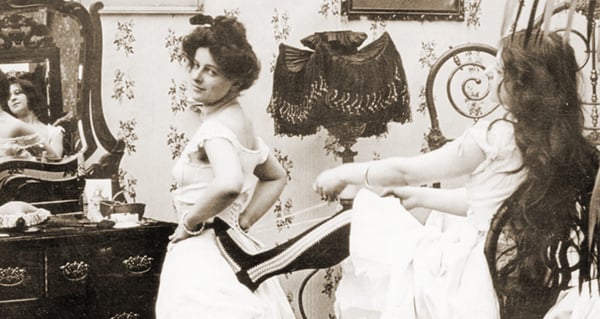
Stereoscopic card depicting a woman being laced into a corset / Prismatic Pictures / Bridgeman Images
Side hoops, also known as panniers, were women’s undergarments worn in the 18th century to enhance the width of the outer dress keeping the front and back sides flat. The most desired shape was a thin waist and wide hips and like most trends, this was taken to the extreme with wide side hoops. Perhaps at their most extreme, in the French court of Marie Antoinette these devices extended the skirt several feet on each side. This trend made it so that women typically took up double the space of a man, and made it difficult to pass through doors without going about it sideways!
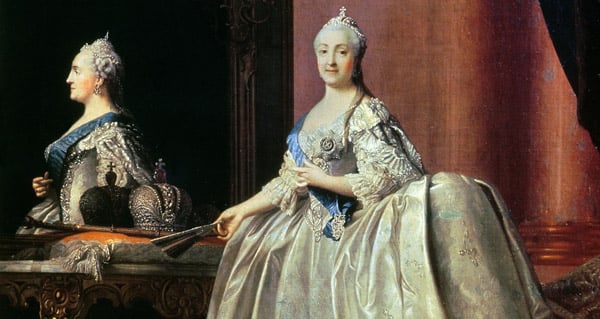
Empress Catherine II before the mirror / Vigilius Erichsen / State Russian Museum, St. Petersburg / Bridgeman Images
Chinese foot binding deserves its own category, as it was an extremely cruel practice that went on for almost 1000 years until it was banned in 1911. Foot binding involved having all but your big toes broken and bound tightly with cloth to prevent your feet from growing larger than 4 inches. The practice originated in the 10th century and fits neatly into interpretations of the Confucian teaching that said that women were subordinates of men. If women’s feet were useless, they would be forced to depend on men for everything. The other reason for foot binding was erotic. The bound foot replicated the structure of the crescent moon, which was an erotic symbol. For these two reasons, having your feet bound became a prerequisite for marriage.

